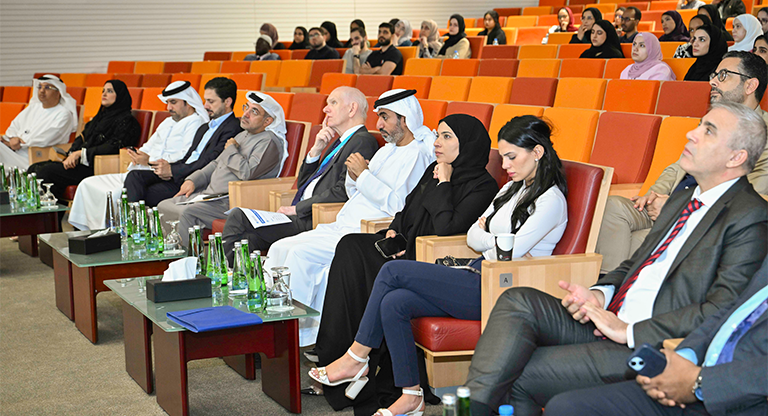
Collaborative Research Reveals Fool’s Gold as a Promising Solar Material
Iron pyrite (FeS2), commonly referred to as fool’s gold due to its striking resemblance, has captured scientists’ imaginations due to its abundance and low cost, making it suitable for harnessing the sun’s energy. Reality has fallen short of expectations, with iron pyrite’s conversion efficiency remaining low, hindering its widespread adoption in solar cells. Now, scientists from Khalifa University, in collaboration with researchers from the University of Dubai and King Abdullah University of Science and Technology (KAUST), have shown that iron disulfide thin films can absorb a significant amount of sunlight making them highly suitable for solar cell applications.
The findings, published in a research paper titled Physics-based Optical Modeling of Iron Disulfide Thin Films , in the top 5% journal APL Materials, from American Institute of Physics (AIP), highlight the significant potential of iron disulfide thin films in solar cell applications. The Khalifa University research team includes principal advisor Dr. Saeed Alhassan, Professor, Chemical and Petroleum Engineering, co-advisor Dr. Ammar Nayfeh, Associate Professor, Electrical Engineering, and PhD student Awais Zaka, as well as Dr. Sabina Abdul Hadi, Associate Professor, University of Dubai, and Pratibha Pal, Research Engineer, Dayanand Kumar, postdoctoral fellow, and Dr. Nazek El-Atab, Assistant Professor, Electrical and Computer Engineering from KAUST.
The team used a combination of experimental techniques to study the iron disulfide thin films and its bandgap – or the range of light wavelengths it can absorb – a critical property that influences performance in light-harvesting devices. These techniques included X-ray, Ultraviolet-visible (UV-Vis) spectroscopy and computer modelling of ellipsometry data to measure changes in light polarization.
Using a plasma-assisted, radio frequency-powered sputtering technique in the Khalifa University cleanroom, the team deposited the thin films and, upon further analysis, found that the iron disulfide films absorb a significant amount of sunlight and have a bandgap was approximately 1.16eV, making them an ideal fit for use in solar cells. Additionally, using physics-based optical modeling of a solar cell, the films can achieve a maximum current density of 38 milliamperes per square centimeter (mA/cm²). This indicates they could generate a relatively high amount of electrical current needed for solar cell applications.
Professor Nayfeh said: “Researching new materials for solar cells is one the key methods for increasing efficiency and reducing cost. Our physics based experimental and optical modeling approach, allows for new materials to be studied as potential absorber layers. The results here show that iron disulfide thin films have great potential as a solar cell absorber layer and for many other optical devices.”
Previous studies have compared 23 materials, such as Silicon, Cadmium Telluride, Copper Oxide, and Lead Sulfide, to find the most cost-effective option for use in devices such as solar cells or other technologies and found that iron disulfide showed the most promise. However, using FeS2 in practical devices comes with a few challenges, including Fermi level pinning, deep donor states, phase purity and alternative phases, and surface inversion, which collectively impact the efficiency and performance of the material in practical applications.
By conducting physics-based optical modelling, the researchers explored the viability of the thin films for their potential as light-absorbing layers in solar cells, further expanding the applications of these films in optoelectronic devices as well. The study’s findings highlight the optical absorbing potential of iron disulfide and emphasize the broader applicability of physics-based optical modelling for novel materials and advancing the field of solar technology.
Alisha Roy
Science Writer
22 March 2024






